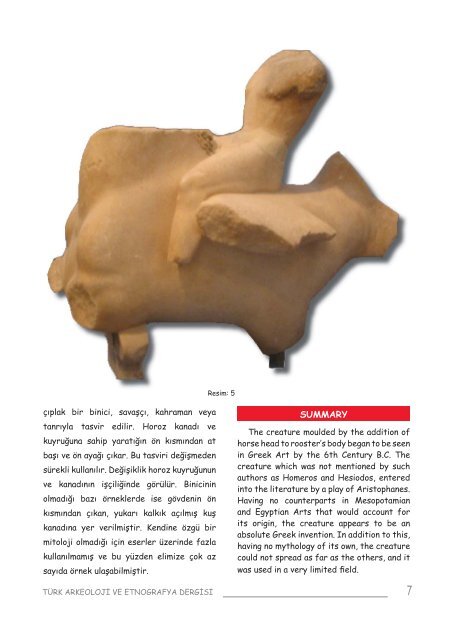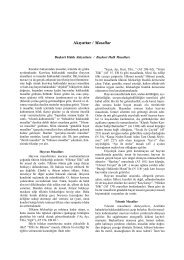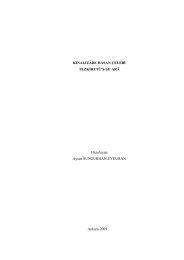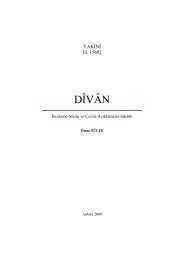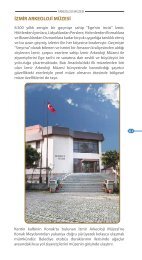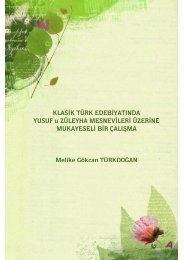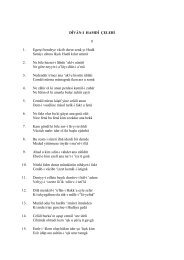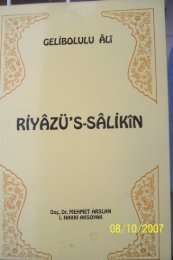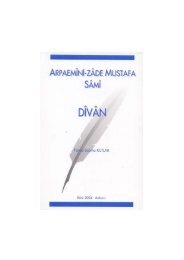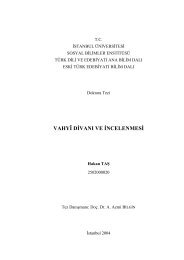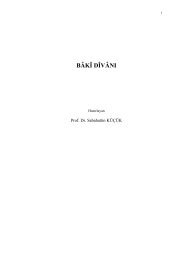9. Türk Arkeoloji ve Etnografya Dergisi - e-Kitap - Kültür ve Turizm ...
9. Türk Arkeoloji ve Etnografya Dergisi - e-Kitap - Kültür ve Turizm ...
9. Türk Arkeoloji ve Etnografya Dergisi - e-Kitap - Kültür ve Turizm ...
You also want an ePaper? Increase the reach of your titles
YUMPU automatically turns print PDFs into web optimized ePapers that Google loves.
çıplak bir binici, savaşçı, kahraman <strong>ve</strong>ya<br />
tanrıyla tasvir edilir. Horoz kanadı <strong>ve</strong><br />
kuyruğuna sahip yaratığın ön kısmından at<br />
başı <strong>ve</strong> ön ayağı çıkar. Bu tasviri değişmeden<br />
sürekli kullanılır. Değişiklik horoz kuyruğunun<br />
<strong>ve</strong> kanadının işçiliğinde görülür. Binicinin<br />
olmadığı bazı örneklerde ise gövdenin ön<br />
kısmından çıkan, yukarı kalkık açılmış kuş<br />
kanadına yer <strong>ve</strong>rilmiştir. Kendine özgü bir<br />
mitoloji olmadığı için eserler üzerinde fazla<br />
kullanılmamış <strong>ve</strong> bu yüzden elimize çok az<br />
sayıda örnek ulaşabilmiştir.<br />
Resim: 5<br />
SUMMARY<br />
The creature moulded by the addition of<br />
horse head to rooster‛s body began to be seen<br />
in Greek Art by the 6th Century B.C. The<br />
creature which was not mentioned by such<br />
authors as Homeros and Hesiodos, entered<br />
into the literature by a play of Aristophanes.<br />
Having no counterparts in Mesopotamian<br />
and Egyptian Arts that would account for<br />
its origin, the creature appears to be an<br />
absolute Greek in<strong>ve</strong>ntion. In addition to this,<br />
having no mythology of its own, the creature<br />
could not spread as far as the others, and it<br />
was used in a <strong>ve</strong>ry limited fi eld.<br />
TÜRK ARKEOLOJİ VE ETNOGRAFYA DERGİSİ 7


